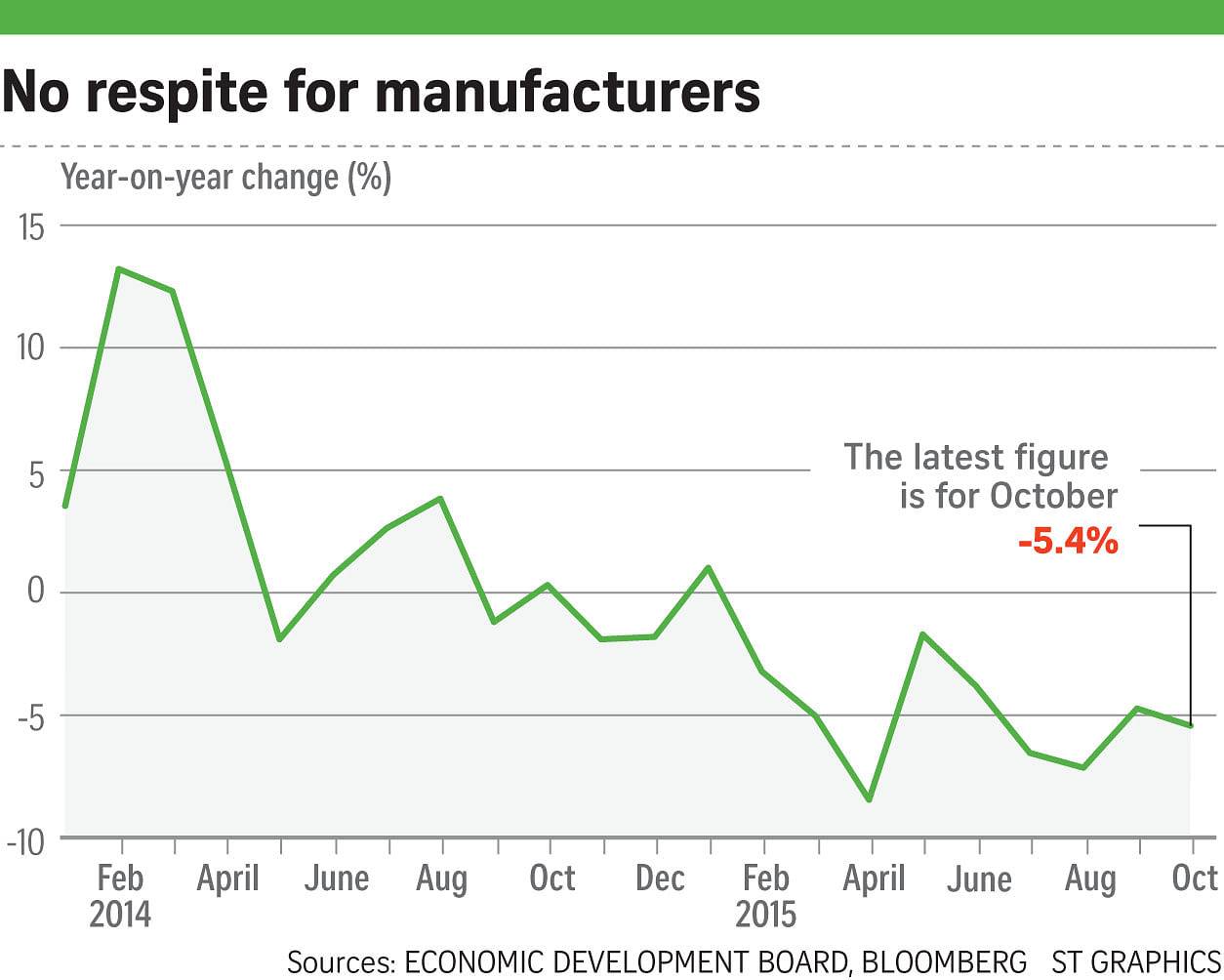The manufacturing sector remained mired in a slump in October as output contracted for the ninth consecutive month amid lacklustre global demand.
The dismal numbers prompted some economists to warn that rising costs, the manpower crunch and mounting international competition are eroding the sector's long-term prospects.
Factory output slid 5.4 per cent in October compared with the same month last year, more or less in line with the 5.3 per cent decline forecast by economists.
There were broad declines across sectors, with the general manufacturing and chemicals clusters the only two bright spots.
Electronics, which makes up a third of manufacturing output, shrank 14 per cent last month from a year ago. The transport engineering, precision engineering and biomedical manufacturing segments also recorded declines.
Excluding biomedical manufacturing, which tends to be volatile, factory output fell a bigger 6.4 per cent, according to figures released by the Economic Development Board yesterday.

Manufacturing, which makes up a fifth of the local economy, has been the main drag on growth this year.
UOB economist Francis Tan said the sector continues to be weighed down by "very weak external demand amid the global deflationary environment".
Economic and political uncertainties plaguing the euro zone, United States and China are a drag on sentiment, he said, adding that the tight domestic labour market is also a significant constraint.
The sector as a whole has contracted an average of 3.7 per cent year on year over the past four quarters, noted DBS economist Irvin Seah. "The latest set of (manufacturing) figures is a reality check and it hurts," he said. "Beyond the cyclical swings, the bigger concern is that the manufacturing sector has been stuck in this structural decline for a while."
The industry, which made up 26 per cent of the economy about a decade ago, now comprises just 17 per cent, Mr Seah noted.
Bank of America Merrill Lynch economist Chua Hak Bin said growth in Singapore's service and manufacturing sectors has "decoupled" since the middle of last year.
Service growth has averaged 3.6 per cent year on year since then, while manufacturing has contracted about 2.6 per cent.
The divergence is also evident in trade data, he noted. Non-oil domestic exports - the goods trade - contracted 3 per cent in the third quarter over a year ago, while service exports grew 2.8 per cent over the same period.
"Resilient services growth is anchoring overall economic growth and reducing the likelihood of a recession," said Dr Chua.
Mr Seah warned that external competition, rising business costs and the manpower shortage are threatening the manufacturing sector. "It's time for policymakers to intensify their efforts to keep the sector afloat... At the current pace of decline in (manufacturing), Singapore could soon follow the path of Hong Kong."

